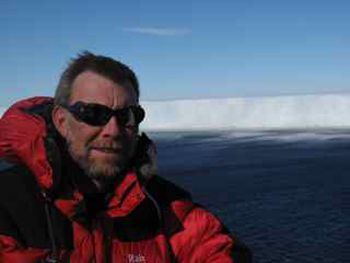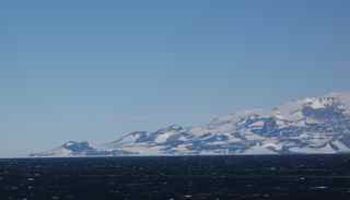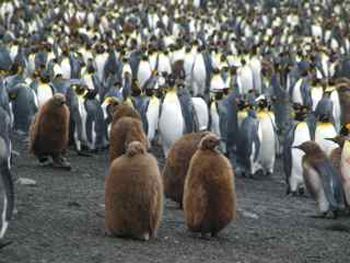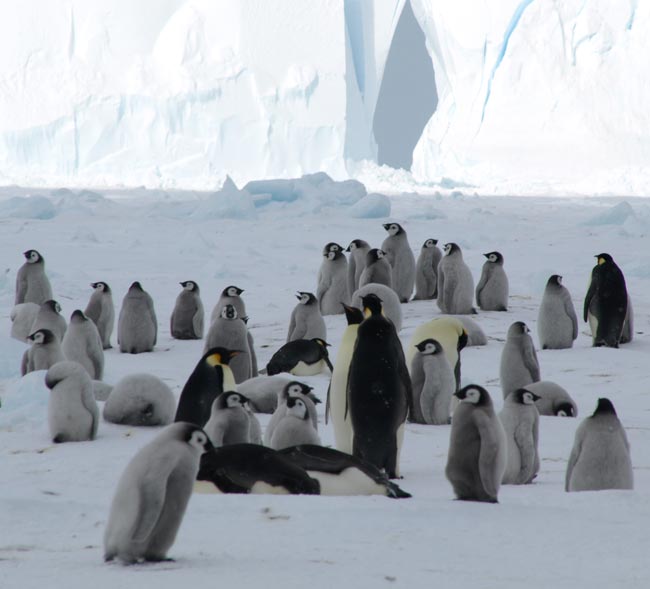Tom Sharpe's Antarctic Diary Sunday 27 November 2011
, 9 January 2012
Sunday 27 November 2011
We’ve been slowly breaking through heavy pack ice as we travel around Ross Island to see the Ross Ice Shelf. But we’ve the view of the volcanoes of Ross Island, including Mount Erebus, which has made up for it.
We saw a rocky headland at the eastern end of Ross Island - Cape Crozier, the site of an Emperor penguin rookery, famous as the destination of The Worst Journey in the World. Edward Wilson, Birdie Bowers and Apsley Cherry-Garrard of Scott’s last expedition sledged the 60 miles from the other side of the island in the intense cold and 24 hour darkness of the Antarctic winter to collect Emperor eggs, believing that these would shed light on the evolutionary relationships between reptiles and birds. The journey was an epic one, with temperatures down to -60oC. It was so cold, their teeth cracked. Their tent blew away and they nearly died. Cherry-Garrard’s book is a classic of Antarctic exploration literature.
Passing Cape Crozier, ahead of us loomed the huge white cliff of the Great Ice Barrier, the edge of the Ross Ice Shelf. Discovered by James Clark Ross in 1841, it is one of the great natural wonders of the world. A vertical wall of floating ice rising 30 metres above the surface of the sea (and about 270 metres below), the edge of the ice shelf extends for 600 km. The ice shelf itself is enormous - a mass if floating ice the size of France.
Strong winds were blowing off the top of the ice shelf today, carrying snow in great sweeps down the face of the ice cliff. James Clark Ross saw it as a formidable barrier to southward travel.
Thursday 1 December 2011
The Ross Ice Shelf is about as far south as you can take a ship on this planet, so from here the only way to go is north. Our original plan was to head towards the west coast of the Ross Sea for some landings on the mainland, but the sea ice is way too thick.
Down by the Ice Shelf, we were in a large area of open water, but the current in the Ross Sea carries the ice clockwise and it has piled up against the west coast. So instead we’re heading out of the Ross Sea. We’ve spent three days breaking through the pack ice and broke into the open water of the Southern Ocean last night. It was foggy and snowing this morning. We’re now about 570 miles from Macquarie Island and skirting the eastern side of a deep low pressure system. The waves in that low are about 8 metres high, but here they are only 5 metres or so. Around us, albatrosses wheel in the wind.
These days at sea are times for lectures and other activities. This morning I lectured on the links between Wales and Antarctica and the support Scott’s expedition received from Cardiff and Wales. There was a lot of interest in our planned exhibition and a number of people have expressed an interest in coming to see it. Some are even thinking of coming from the US and combining visits to the exhibitions in London and Cardiff, which would be great.
Saturday 3 December 2011
We’ve not been on land since last Saturday. We spent three days breaking ice in the Ross Sea and another three in the rolling waters of the Southern Ocean.
It’s not been quite as calm as it was on the way south. We’ve been rolling at about 30o and pitching as well, so we’ve had an uncomfortable time being thrown about. But now land is in sight. We’re sailing along the coast of Macquarie Island. It’s in the middle of nowhere, a sliver of land in the vast southern ocean.
It’s a cold, grey, damp and foggy day. We landed near the northern end of the island at an Australian research station and staff there showed us around their facilities, which, being an Australian base, includes not only a bar, but a brewery. The station is surrounded by a sturdy fence to keep out the elephant seals, big, heavy, noisy, smelly animals that would flatten anything and everything. Outside the station, they are everywhere. The geology around here is fascinating. The island is a slice of ocean floor which has been uplifted along the boundary between the Australian and Pacific plates.
After lunch we landed at a bay on the island’s east coast on a beach crowded with King penguins and the much smaller Royal penguins with their bright yellow crests. Walking through the surf along the shore, with penguins come in and out of the water around my feet was a special experience. A short walk north along the shore took us to a colony of King penguins where it was hard to believe that the comical, dumpy, brown, fluffy ‘okum boys’ which are the immature Kings would eventually turn into such beautiful adult birds. At the back of the beach, a penguin highway busy with Royals led uphill to a huge, noisy, densly packed throng of many thousands of the birds, some with tiny chicks at their feet.



